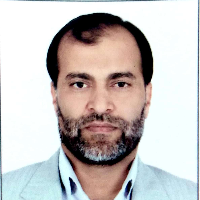Evaluation of the application of SIIG index in the selection of barley pure lines with high yield and desirable agronomic characteristics in warm areas of Iran
Barley is unique among crop plants for being of tremendous importance to agriculture and to science. Advances on both fronts create a positive feedback loop, allowing barley to be in the forefront in meeting the great challenges of climate change and human population growth. In terms of agriculture, barley is the fourth most important cereal crop in the world. Barley grain, in the form of malt, is the perfect nutritional source for yeast and is therefore the base of the brewing industry. Selection index of ideal genotype (SIIG) technique was improved as following method to the selection of favorable genotypes using different morphological traits simultaneously.
In order to study the phenotypic diversity of inbred barley lines under heat stress conditions at the end of the season, 108 pure line in the non-repeating Augment design with four controls (Nimroz/Sahra, Norooz, Auxin and WB-95-19) in three blocks, in the Center for Agricultural Research and Education and Natural Resources Fars (Darab), Ahvaz, Sistan (Zabol) and Golestan (Gonbad) were evaluated during 2018-19 cropping year. Plots consisted of six rows that were 6 m long with spacing of 0.20 m between rows. Seeding rate was 300 seeds/m2 at each trial. Agronomic practices including fertilizer application and weed management were carried out as recommended at each location. Following harvest, grain yield (kg ha-1) was determined for each genotype at each testing environment.
The results of REML analysis showed that the highest heritability of yield was related to Gonbad (0.952) and Ahvaz (0.530), respectively, and the heritability of grain yield was close to zero in Darab region and 0.111 in Zabol. The results of SIIG index in Darab showed lines number 8, 33, 34, 64, 32, 6, 2, 113, 15, 13, 119, 9, 28, 87, 115, 85, 65, 14,16 22, 86, 3, 10 and 89 were the best lines with the highest value of SIIG index (0.800-600), respectively. In Ahvaz, lines 113, 119, 109, 19, 83, 110, 90, 82, 120, 98, 118, 17, 106, 102, 40, 42, 23 and 18, with the highest amount of SIIG (0.600-0.600) were the best lines. In Zabol, lines 120, 17, 28, 18, 33, 24, 30, 104, 34, 22, 105, 14, 19, 118, 15, 38, 119 and 16 with the highest value of SIIG index (0.600-0.800) respectively, were the best lines. Lines number 47, 46, 112, 86, 85 and 83 with the highest value of SIIG index (0.900-0.600) were the top lines in this experiment in Gonbad region.
In total, based on the average results of SIIG index in all regions, lines number 113, 33, 104, 119, 17, 2, 18, 23, 28, 120, 106, 112, 86, 34, 102, 47, 15, 85, 16, 19, 57, 118, 103, 46, 24, 98, 105, 40 and 22 with the highest average value of SIIG index (0.700-500), respectively, are the best lines in most regions. This research showed that the SIIG index was able to categorize the genotypes according to the different traits, simultaneously. The SIIG method is comprehensive in the order in which amount of information increases. It is very effective in selection of ideal (best) genotypes using several different traits or indices simultaneously. Therefore we propose that researches use of SIIG method to study of genetic variation and help to choose ideal genotypes using morphological and physiological traits, simultaneously.
-
Selection of barley (Hordeum vulgare L.) genotypes for grain yield, yield stability and tolerance to terminal season drought stress under temperate climatic conditions of Iran
, Elias Arazmjoo*, Seyyed Ali Tabatabaei, Javad Hasanpour
Iranian Journal of Crop Sciences, Winter 2025 -
Emergy Cost-Benefit Analysis of Cropping Systems for Sustainable Agriculture Development in the Sistan Region
Shir Ali Koohkan, Majid Dahmardeh, Mahmood Mohammad Ghasemi *
Journal of Studies in Entrepreneurship and Sustainable Agricultural Development, Spring 2025 -
Evaluation of the sustainability of wheat production systems in the Sistan using emergy analysis
Shirali Kohkan *, Seyed Ahmad Ghanbari, Mohammadreza Asgharipour, Baratali Fakheri
Agriculture, Environment and Society, Summer- Autumn 2023 -
Analysis of genotype by environment interaction in barley across various locations in Iran using the AMMI model
, Majid Taherian *, Fatemeh Saeidnia, Hamidreza Nikkhah, Elias Arazmjoo, Mehrdad Mahlooji, Manoochehr Taheri, Seyed Ali Tabatabaee, Siroos Tahmasebi
Iranian Journal of Genetics and Plant Breeding, Apr 2024



